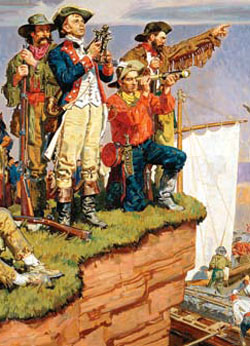Montana: Stories of the Land
Companion Website and Online Teacher's Guide
Other Useful Links
Chapter 1 - Montana: Where the Land Writes History
Chapter 2 - People of the Dog Days
Chapter 3 - From Dog Days to Horse Warriors
Chapter 4 - Newcomers Explore the Region
Chapter 5 - Beaver, Bison, and Black Robes
Chapter 6 - Montana's Gold and Silver Boom
Chapter 7 - Two Worlds Collide
Chapter 8 - Livestock and the Open Range
Chapter 9 - Railroads Link Montana to the Nation
Chapter 10 - Politics and the Copper Kings
Chapter 11 - The Early Reservation Years
Chapter 12 - Logging in the "High Lonesome"
Chapter 13 - Homesteading This Dry Land
Chapter 14 - Towns Have Lives, Too
Chapter 15 - Progressive Montana
Chapter 16 - Montana and World War I
Chapter 17 - Montanans on the Move
Chapter 18 - The Great Depression Transforms Montana
Chapter 19 - World War II in Montana
Chapter 20 - Building a New Montana
Chapter 21 - A People's Constitution
Chapter 22 - Living in a New Montana
The Library of Congress website provides historical pictures and information. Of particular interest may be the digital collections and teachers pages. Teachers who want to incorporate primary sources into their classrooms may want to start with this lesson on primary sources.
The U.S. Census Bureau website provides statistical information on the United States.
The Education staff at the National Archives and Records Administration has created a marvelous set of document analysis worksheets. These include the Written Document Analysis Worksheet we have recommended for use with our Learning from Historical Document Units as well as worksheets designed to guide students through analyzing cartoons, posters, photographs, maps, artifacts, motion pictures, and sound recordings.
Measuring Worth is a website that offers calculators that can help you understand how the value of the dollar has changed over time and to compare the costs of goods in the past to today.


